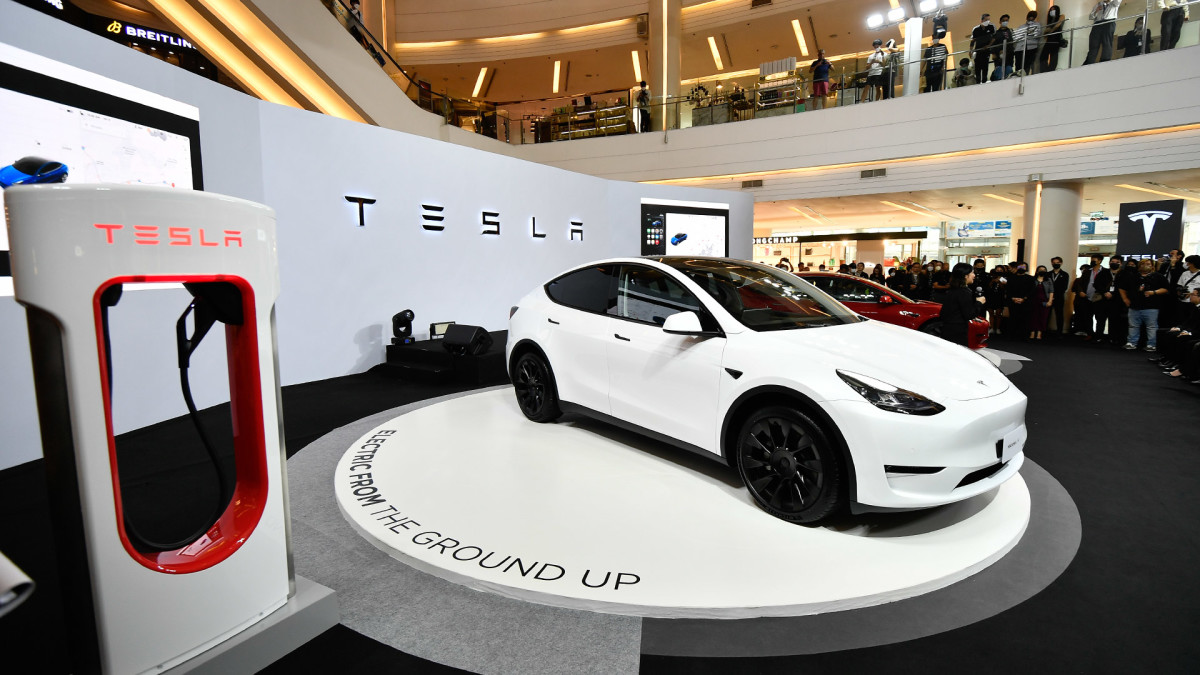
Tesla TSLA has enjoyed a historical run-up over the past decade, but that hasn’t kept it from becoming one of the biggest battleground stocks.
Investors either love or hate CEO Elon Musk’s mercurial personality. Bulls view his auto industry disruption as only the beginning, while bears point toward a track record of unkept promises around new vehicle launches and autonomous driving.
The Tesla bulls have undeniably been rewarded for their confidence; however, Tesla’s stock has been hit-or-miss since 2021. Shares declined during the bear market last year and rebounded in the first half of this year, only to sell off again recently.
Tesla’s roller-coaster ride has likely confused bulls and bears, but Real Money analyst Bruce Kamich correctly predicted both Tesla’s rally and sell-off. In June, he said Tesla would reach $300; in August, he told shareholders to sell; and in October, he predicted shares could fall to $193, almost to the dollar of where shares stopped falling last month.
Kamich recently updated his analysis, including a new price target that will likely disappoint many.

Image source: Getty Images.
Tesla benefits from EV sales growth
Tesla was the first electric vehicle maker to focus on performance and luxury rather than economy. That strategy has clearly worked out. EVs have gone from a niche pipe dream to mainstream, capturing an increasingly more significant proportion of total vehicle sales.
Related: Cathie Wood has a blunt warning about Tesla's stock over the coming months
Tesla has been the prime beneficiary of EV adoption. Its success with the Model S allowed it to invest in new models targeting key markets, including the Model Y, which has become a top-selling SUV, and the Model 3, which is leading the charge in the under-$40,000 family car market.
While Tesla’s Model Y and 3 continue to enjoy sales growth, demand for the Model S and X has recently slumped amid growing competition from most automakers.
As a result, while total EV sales in the U.S. increased by nearly 50% in the third quarter to 313,000, Tesla’s unit volume only increased by 20%.
The slower sales growth is despite price cuts designed to spark demand.
Unfortunately, lower prices didn’t spur enough new buyers to make up the difference. As a result, Tesla’s third-quarter revenue only grew by 9% from one year ago, down from 47% in the second quarter. Profits fell 37% to $0.66 per share.
The downbeat results cast a shadow over how likely it is that Tesla will capitalize on the market as EVs increasingly replace vehicles powered by gas-guzzling internal combustion engines (ICE). Wall Street analysts expect EVs will account for 40% of all vehicles sold in the U.S. by 2030, up from about 8% last quarter.
Tesla's price charts point to a new price target
For over 50 years, Kamich has analyzed price charts for professional investors. His accurate prediction that Tesla would rally and decline this year was based on his technical analysis of Tesla's price and volume activity.
More Business of EVs:
- A full list of EVs and hybrids that qualify for federal tax credits
- Here’s why EV experts are flaming Joe Biden’s car policy
- The EV industry is facing an unusual new problem
Kamich evaluated Tesla’s daily and weekly charts on Nov. 9 for insight into what could happen next to Tesla's stock. He also used daily and weekly point-and-figure charts to calculate new price targets. Overall, he wasn’t impressed by what he saw.
“Prices trade below the declining 50-day moving average line and I can see that prices failed at the underside of the 200-day moving average line,” wrote Kamich. “The On-Balance-Volume (OBV) line has moved lower since the middle of July and tells me that sellers of TSLA have been more aggressive than buyers. The Moving Average Convergence Divergence (MACD) oscillator is below the zero line and struggling to generate a cover shorts buy signal.”
The on-balance volume (OBV) is essentially a running total of up minus down volume. MACD is a momentum measure.
For Kamich to expect Tesla’s shares to rally, he’d want to see more trading volume on up than down days and decidedly bullish momentum. Since neither is true, the most likely path for shares is lower.
How much lower? Kamich’s new daily point-and-figure chart target improved to $195, up from his previous $193 target. However, the weekly chart projects a price target of $139, considerably below where Tesla shares are trading.
“Traders and even investors should avoid the long side of TSLA as prices look vulnerable to further declines,” concluded Kamich.







